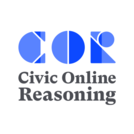
A lesson about online communication using a simulation of a Twitter conversation in a "telephone game" style.
- Subject:
- English Language Arts
- Material Type:
- Activity/Lab
- Interactive
- Date Added:
- 04/27/2022

A curated collection of resources to help you safely incorporate information found on social media platforms in your classroom. Stay social media savvy with these safety tips.

A lesson about online communication using a simulation of a Twitter conversation in a "telephone game" style.

Social media sites, like Twitter, are filled with individuals and groups seeking to further their agendas. In order to navigate this sea of information, students need to be able to weigh the relative strengths and weaknesses of tweets as sources of information. This task assesses students’ ability to consider the source of a tweet and the information contained in it en route to describing what makes it both a useful and less useful source of information.

Social media is rife with specious claims, and students often struggle to decide whether such claims are sound. This task asks students to evaluate the merits of a tweet that makes a claim about gun ownership and provides a link to an article as evidence.

Videos are a powerful, popular, and increasingly easy way to make and spread arguments about policy topics. Compelling footage and authoritative narration may make students tempted to trust such videos. In this task, students watch a short video and explain why they might not trust a video that makes a contentious claim.

In this task, students are asked whether a doctored video posted on Facebook provides strong evidence for a political claim. Rather than take the video at face value, students should interrogate where it came from and who posted it.

Social media has become a forum for discussions about politics and public policy. These conversations often include links to news articles, videos, and other sources, but the quality of this evidence varies tremendously. In this task, students are presented with two posts from a Facebook conversation and asked to explain which contains better evidence.

Social media outlets have become go-to places for news organizations to disseminate their stories. However, for every journalist posting on Twitter or Facebook, there are imposters uploading bogus messages in that person’s name. Identifying fake accounts is a critical skill for successfully navigating social media.
This task assesses students’ knowledge of an important symbol on Twitter and Facebook—the blue checkmark, which indicates a verified account. Students are asked which of two Facebook posts is a more trustworthy source about Donald Trump’s decision to run for president. Although both posts claim to represent Fox News, only one is verified.

Twitter has become a powerful source of information about breaking news. Surveys show that young people increasingly rely on it for news about events as they unfold in real time. But it’s not always easy to distinguish a tweet that’s based on a legitimate source from one that relies on hearsay. This assessment taps a student’s ability to assess the trustworthiness of different kinds of tweets.

Videos shared through social media can quickly go viral, reaching millions. The ease of producing and distributing videos means that virtually anyone can post their views online. As a result, students need to become skilled at distinguishing between credible and dubious sources. In this task, students are asked to evaluate a video on Facebook. Evaluating this video is not a process of simply accepting or rejecting it; instead, students must look for the video's potential strengths and weaknesses.